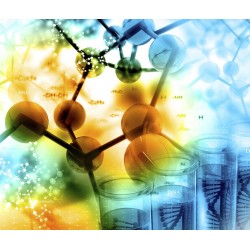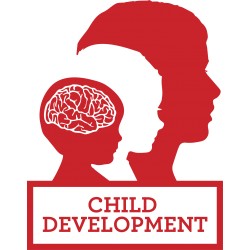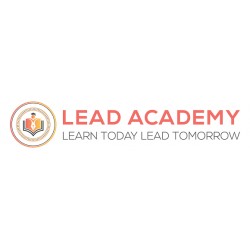No products
Prices are tax excluded
Product successfully added to your shopping cart
Total Voucher amount in Cart: 0Euro. There is 1 item in your cart.

Free eBook. Was €191. PDF E-book Introduction 2 Computer Science Course Online
Get Your Free Online Course Today! What Will You Learn?
With The Introduction 2 Computer Science Course Online ebook
The course has been designed for someone without any prior knowledge of the subject and will allow the student to study the course at their own pace in their own home, emailed directly to your inbox.
 | This item has been sold |
| 37 | |
| times |
No reward points for this product.
- Send to a friend
- Remove this product from my favorite's list.
- Add this product to my list of favorites.
Introduction 2 Computer Science
Learn about the history & time line of computers with this written online course. We explain the leaders and pioneers in the computer science industry. Read about the different types of computers throughout the years.
Read Below For A Sample Chapter...
Other topics include
- The Components Of A Computer.
- Binary Numbers & Logic Operations.
- The Computer Software Development Process.
- Operating System.
More Course Info
- Full Refund Money Back Gaurantee Available if you are not 100% happy with this pdf ebook.
- No Extra Charges Or Hidden Admin Fees
- Online Course in the form of an ebook pdf.
- 6 chapters. 33 pages. 4886 words.
- There will be a list of goals and tasks following each chapter.
Who Would Benefit from the Course?
This course is ideal for those that are either complete beginners to the field of Computers, Computer Science, Engineering and are considering making a career change to become a Computer Scientist, Software Engineer or Web Developer, with the aim of getting an insight and understanding of Computers. Computer Technicians, Developers looking to reinforce their knowledge or to pick up some new skills. This course is also ideal if you are interested in a career in the field of computers though are unsure if you want to commit yourself financially and time wise to a full computer science qualification.
Course Syllabus
Chapters / Modules
- Introduction & Background
- Computer Types
- Components of the computer
- Binary Numbers & Logic Operations
- Computer Software
- Operating Systems
Voucher Code Redemption
- May buy multiples.
- Training courses are online only.
- Can be used at any time.
- Compatible on all Devices.
Read a sample chapter below...
Chapter 1 . Introduction & Background
Charles Babbage (1791-1871):
Creator of the Analytical Engine - the first general-purpose digital computer (1833)
The Analytical Engine was not built until 1943 (in the form of the Harvard Mark I)
A lesson that we all can learn from Babbage’s Life
Charles Babbage had huge difficulties raising money to fund his research. As a last resort, he designed a clever mathematical scheme along with Ada, the Countess of Lovelace. It was designed to increase their odds while gambling. They bet money on horse races
to raise enough money to support their research experiments Guess what happened at the end? The lost every penny that they had.
Harvard Mark 1 – 1943:
Howard Aiken and Grace Hopper designed the MARK series of computers at Harvard
University. The MARK series of computers began with the Mark I in 1944. Imagine a
giant roomful of noisy, clicking metal parts, 55 feet long and 8 feet high. The 5-ton
device contained almost 760,000 separate pieces. Used by the US Navy for gunnery and
ballistic calculations, the Mark I was in operation until 1959.
Transistor – 1947
The first transistor was invented at Bell Laboratories on December 16, 1947 by William
Shockley. This was perhaps the most important electronics event of the 20th century, as
it later made possible the integrated circuit and microprocessor that are the basis of
modern electronics.
Cray 1 – 1 976
It looked like no other computer before, or for that matter, since. The Cray 1 was the
world's first "supercomputer," a machine that leapfrogged existing technology when it
was introduced in 1971.
And back then, you couldn't just order up fast processors from Intel. "There weren't any
microprocessors," says Gwen Bell of The Computer Museum History Center. "These
individual integrated circuits that are on the board performed different functions."
IBM PC – 1981
On August 12, 1981, IBM released their new computer, re-named the IBM PC. The
"PC" stood for "personal computer" making IBM responsible for popularizing the term
"PC".
Apple Macintosh – 1984
Apple introduced the Macintosh to the nation on January 22, 1984. The original
Macintosh had 128 kilobytes of RAM, although this first model was simply called
"Macintosh" until the 512K model came out in September 1984. The Macintosh retailed
for $2495.
Today’s Goal:
- Find something from the computer history that is not in this lecture
- Note down your favorite thing about the computer history
Reviews
I just saved £100! Thank you Trev
Super quick service
Super fast
Super fast easy delivery simple as 1,2,3 been wanting to do this course for ages and now I got it at a bargain price thank you
My first purchase
Timely, reliable, and friendly services. Thank you!
Works Great!
Thank you, for a great service,I will use vouch Off next time!
Sarah Rogerson
Thank you, Trevor! I’m looking forward to starting my courses, fab service and I am so excited xcited I will definitely recommend























